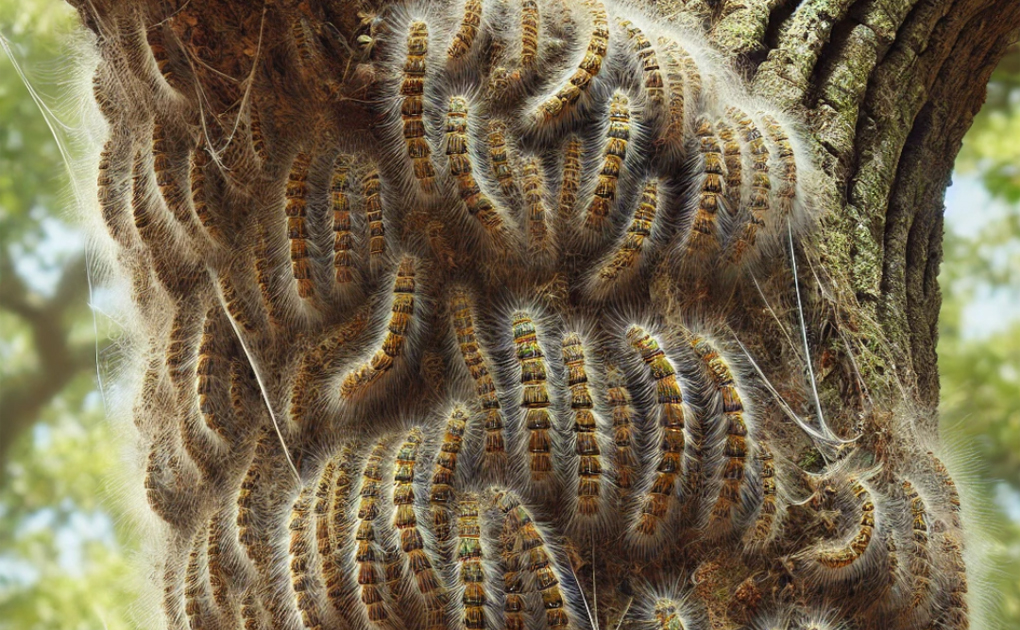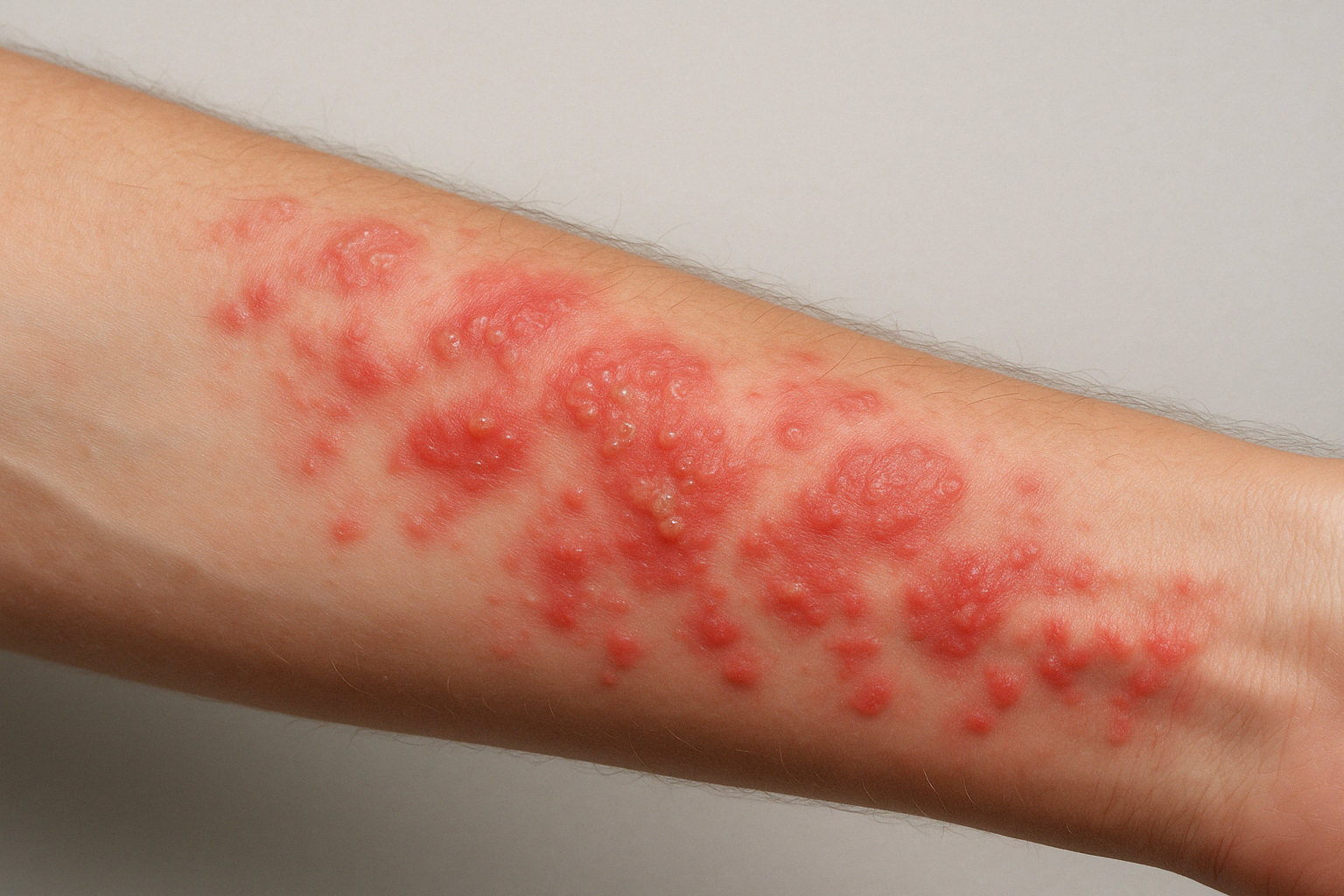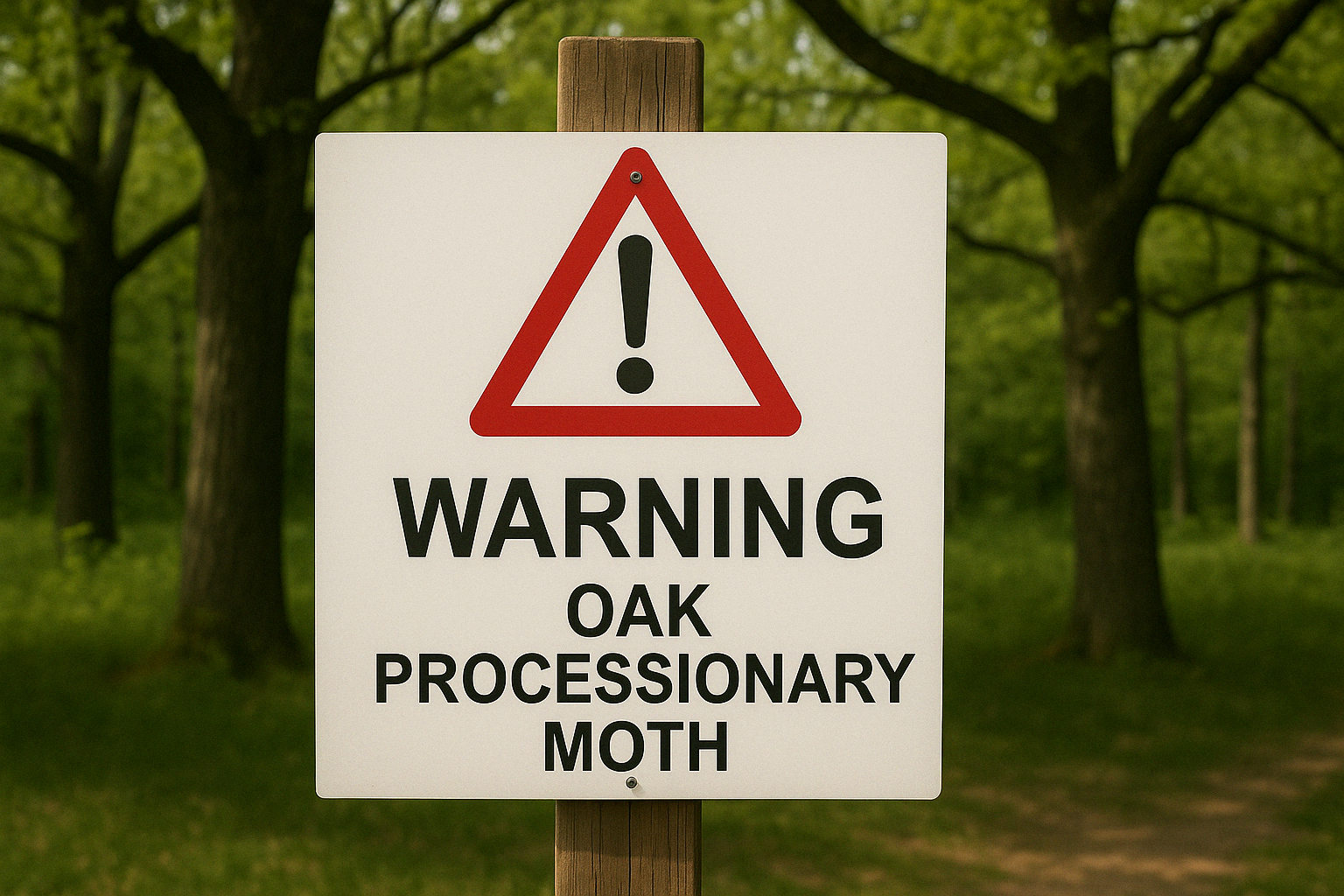
Combating the oak processionary moth: risks, protective measures & PPE recommendations
Between invisibility and underestimated risk - what makes the oak processionary moth so dangerous
An employee of the municipal building yard calls in sick: itchy skin, red wheals on his arms and neck. It only becomes clear during the debriefing - he had come into contact with a branch carrying a nest of the oak processionary moth a few days earlier.
Cases like this are no exception. The caterpillars' stinging hairs can cause severe allergic reactions - even without direct contact with the caterpillar. They float in the air as an invisible irritant, accumulate on clothing and remain active for months.
The oak processionary moth has been spreading in Germany for years - with serious consequences for people and nature. Their inconspicuous nests in oak trees pose a major health risk. This is due to the caterpillars' tiny stinging hairs, which can cause severe allergic reactions on contact.
For outdoor workers - whether in horticulture, municipal building yards, forestry or building cleaning - contact with the animals and their nests poses a serious risk. This requires not only caution, but also consistent occupational safety.
In the rest of this article, you will find out:
- when and where the oak processionary moth is active
- what dangers it poses
- how to protect yourself and your employees effectively
- and which personal protective equipment (PPE) has proven itself in use.
Biology and cycle of the oak processionary moth: when to be careful
The oak processionary moth (Thaumetopoea processionea) is an inconspicuous moth, but its larvae can have a serious impact on the environment and human health. It is not the animals themselves that are particularly problematic - but their larval stages and what they leave behind.
Life cycle at a glance:
- Egg laying (August-September): The inconspicuous butterflies prefer to lay their eggs in the upper crowns of oak trees in sunny locations. One female can lay up to 200 eggs.
- Hibernation & hatching (April): The caterpillars hatch in spring - from mid-April - and then go through up to six moults.
- Most dangerous phase (May-July): From the third moult onwards, the dreaded stinging hairs form. They contain the nettle toxin thaumetopein, which can cause irritation and allergic reactions.
- Pupation (July-August): The caterpillars retreat into so-called web nests to pupate. These abandoned nests still contain dangerous hairs months later.
- New cycle: The adult moths only live for a few days, are harmless themselves - and lay eggs again.

Recognising oak trees - this is crucial when it comes to protecting against the oak processionary moth
Typical features are deeply lobed leaves with 3 to 7 incisions, dark furrowed bark and the characteristic acorns. Oak trees are often found along paths, in parks or in public green spaces - i.e. exactly where contact with nests is particularly likely.
Typical infestation sites:
- Parks, schoolyards, daycare centres
- Forests & forest edges
- Cemeteries, playgrounds, railway embankments
- Business premises, construction sites, public transport routes
This is why: Anyone working outdoors must be familiar with the life cycle of the oak processionary moth and the locations where it is found - and take preventative action before it causes damage to health.
Symptoms and dangers: Why contact with the oak processionary moth should be taken seriously
The main health risk of the oak processionary moth comes from the microscopically small stinging hairs of the caterpillars. They are barbed, extremely light and can be spread over long distances by the wind. A single caterpillar body can contain several hundred thousand of these hairs - and even after the caterpillars have disappeared, the hairs remain actively dangerous for months.
How does the nettle toxin thaumetopein work? The toxin triggers a pseudo-allergic reaction. Unlike a classic allergy, no prior sensitisation is necessary - contact alone can cause symptoms.
Frequent symptoms on skin contact or inhalation:
- Skin rashes (caterpillar dermatitis): Severe itching, wheal formation or red pustules - often on the throat, neck, forearms.
- Respiratory tract irritation: Cough, hoarseness, bronchitis-like symptoms, especially in sensitive people or with heavy exposure.
- Eye irritation: Conjunctivitis, redness, foreign body sensation.
- General symptoms: Fever, dizziness, malaise - especially with extensive exposure.
- Anaphylactic reactions: In rare cases, circulatory problems or shortness of breath may occur.
Particularly insidious: Even old nests, empty spider remains and contaminated clothing remain dangerous.

First aid measures in the event of contact with stinging hairs:
Despite all precautionary measures, contact with the stinging hairs of the oak processionary moth can occur in contaminated areas. In such cases, quick, level-headed action is crucial to minimise health consequences. The following measures should be taken immediately:
- Change clothes immediately and wash them separately at at least 60 °C to prevent the hairs from spreading further.
- Shower thoroughly, including washing hair, to remove any stinging hairs from the skin and head.
- Rinse eyes immediately with water - ideally using a suitable eye wash bottle.
- If you have symptoms or are unsure do not delay seeking medical advice - especially if you have respiratory symptoms or allergic reactions.
These measures can make the difference - between an unpleasant incident and serious health consequences.
Long-term risks: Repeated contact with the hair can sensitise the skin - even small amounts can then trigger stronger reactions. The hair can also adhere to clothing, tools or vehicles and be carried on unnoticed.
Professional groups particularly at risk:
- Municipal workers and green space maintenance workers
- Forestry and landscaping
- Construction workers and civil engineering staff
- Cleaning services and waste disposal companies
- Playground maintenance, security services and school caretakers
Conclusion: The caterpillars themselves avoid people - their hair does not. Protection is therefore essential when working outdoors - even if no active caterpillars are visible. Early information, the right PPE and a professional approach are crucial to avoid damage to health.

Appropriate protective measures according to the TOP principle - what professionals really need
When it comes to protecting employees, the tried-and-tested TOP principle applies when dealing with the oak processionary moth: Technical, Organisational and Personal measures - in exactly this order.
(T)echnical measures:
- Have moth nests professionally removed - exclusively by specialised companies that work with powerful industrial vacuum cleaners (dust class H, with pre-separator).
- Early biological control - for example by using Bacillus thuringiensis to stop the caterpillars at an early stage.
(O)rganisational measures:
- Seal off infested areas and mark them visibly.
- Perform and document regular visual inspections.
- Sensitise employees - e.g. through short training sessions or safety instructions.
- Minimise the length of stay and assignments in risk zones.
- Communicate hygiene requirements clearly - for example, change clothing, comply with skin protection and provide cleaning facilities.
(P)ersonal protective measures with the appropriate PPE:
- Disposable protective suits type 4B/5B/6B ➤ For manual removal, our CoverStar® Plus CS400 has proven itself - antistatic and particle-tight thanks to taped seams.
- Respiratory protection mask with P2 or P3 filter➤ Protection against inhalation of fine hair - recommended: Half masks or full masks with a tested filter insert such as the fine dust mask FFP3 NR D P3V
- Chemical-resistant gloves➤ Avoid skin contact - important when manually removing or cleaning infested surfaces.
- Eye protection / safety goggles➤ Stinging hairs strongly irritate the mucous membranes - safety goggles with side protection are standard.
- Smooth overshoes or easy-to-clean protective boots ➤ Prevent stinging hairs from being carried in - also important for cleaning and follow-up work. With the CoverStar® CSH overboots , you have all-round protection.
What counts now: The protective equipment must be put on, taken off and disposed of correctly. Mistakes can lead to contamination. Therefore: introduce training, checklists and clear procedures.
Cleaning and aftercare - properly securing contaminated areas
After the operation is before the danger - because stinging hairs remain active for months and can be carried on surfaces, vehicles or clothing.
Recommended aftercare measures:
- Decontamination of PPE (not intended for reuse - only possible with special clothing)
- Sealed disposal of all disposable parts in dust-tight containers
- Damp cleaning of affected surfaces, never sweep or blow dry
- Change filters and clean masks according to the manufacturer's instructions
- Clean vehicles and tools, ideally with HEPA vacuum cleaners (high-efficiency particulate air filter) or a damp wiping technique
Tip: For infested machines and hard-to-reach surfaces, it is worth using specialised cleaning services or professional remediation companies.
Quick FAQ: Häufige Fragen zum Eichenprozessionsspinner
1. How long do the stinging hairs of the oak processionary moth remain active?
Several months, also in old nests or on clothing.
2. Can infested clothing be cleaned?
Washing temperatures from 60 °C reduce the risk, but are no guarantee. Contaminated clothing should be treated separately or replaced.
3. When is peak season for the caterpillars?
Between May and July, depending on the weather.
4. Which PPE is really required?
FFP2 or FFP3 mask, overall type 4B/5B/6B, gloves, safety goggles, chem tape. For nest removal: full protection.
5. What to do in case of symptoms?
Avoid contact, change clothes, gently cleanse skin, seek medical advice
